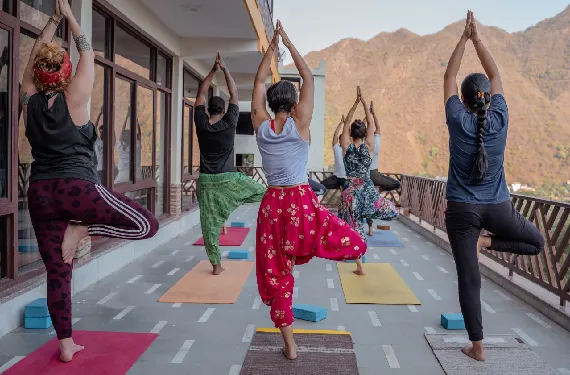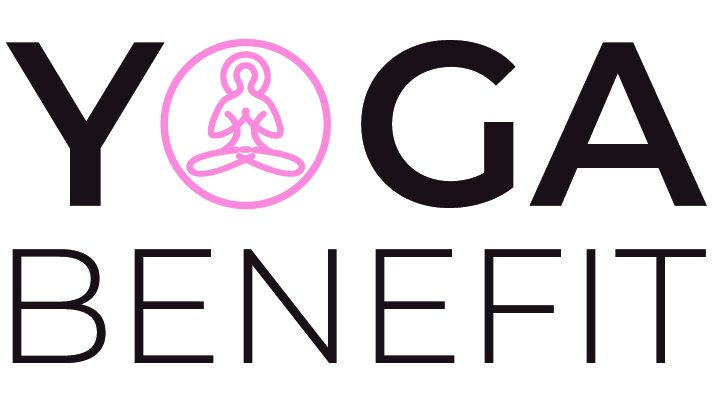UN News says that there are more than two billion people practicing yoga around the globe. This statistic was collected in, but I imagine that it has grown tremendously over the years. Yoga is not a lifestyle. For some, it is a hobby that allows them to relax and condition their bodies. But for others, it is a way of living. You might be considering making your yoga hobby a career. Perhaps you are considering quitting your job at 9-5 to become a yoga teacher. Do you dream of flying off to do yoga on a remote island and sipping matcha? If so, you are ready to implement your dream plan.

After having attended over ten teaching programs and taught over twenty yoga teacher courses around the globe, I can offer some advice on choosing the right teacher training. These are only my opinions based on years of experience. These opinions are now mine in the hope that you won’t waste your money and, best of all, to get you signed up for the program that you want.
These are 10 tips to help you choose the right yoga teacher training program for you.
- Identify your goal
This may seem obvious. It may seem obvious, but it will allow you to focus on the goal and stay focused when things get difficult or confusing. You need to decide if you are looking to be a yoga teacher, or if you simply want to improve your knowledge and not go on teaching. It will be easier to find the right yoga teacher training program once you have identified your goal.
- Style of Yoga
There are many types of yoga today, including Hot yoga and Acro yoga. Not all types of yoga will suit you. Ashtanga Power, Vinyasa and Power yoga are excellent choices for those who are physically fit. Yin or Restorative may be more suitable for those with less physical abilities. Acro yoga is a more physical style than Kundalini, while Kundalini is more energetic. If you are just starting your yoga practice, explore different styles to find the one that works best for you. Learning one style of yoga doesn’t mean you can’t teach others. It just lays the foundation for your future learning. Each style of yoga is unique and can be studied for decades. The 200hr teacher education will provide the foundations for your future learning. It is a good idea not to limit your focus to a particular style of yoga, but to keep your mind open to other styles.
- How experienced is the school?
Remember that a school is like a waterfall. Everything you learn from them will flow down. You want to make sure you choose a school with a good reputation and who is well-versed in offering courses. There are many new schools opening every year. In the yoga industry, the only requirement to register for a course is an ERYT200. This is just two years of teaching experience. It is important to choose between schools that have a track record and those who are newer and less experienced in offering teacher trainings. A qualified yoga school should have hundreds of graduates and be able provide many testimonials from recent students. A yoga school that has produced many graduates will receive more feedback and be more likely to take on board the feedback. You can find this feedback on their website, Facebook page reviews or Google reviews. They also need to improve and update the delivery method and program to better meet students’ needs. You should also pay attention to the details of the curriculum. Is there a balance between theory and practical application? Good training courses should offer a mixture of content, yoga classes that you can take as a student and teaching practice sessions where you will be integrating all your learning into a real teaching environment. Ask the school any questions you may have. There is no silly question and every training organization worth their salt will gladly talk you through all details.
- What are the Experiences of Teachers?
It is obvious that teachers are a key role model and source for inspiration when you learn to teach. A school’s greatest asset should be its teaching staff. It’s worth looking for schools that offer co-teaching – it will benefit you tremendously from the different points of view of your teachers. You should research the teaching staff for the course you are interested in. What combined years of experience does the teaching team have? Do you have guest teachers who can teach specialized modules like anatomy or philosophy? Each teacher in your training should be internationally recognized as an expert in their particular discipline of yoga. They will also work together to offer a holistic yoga education.
- Budget
This is a huge investment. The cost of yoga teacher training can be quite expensive, with prices ranging from USD 2000 to USD 5000 depending on where you live and what school you attend. This amount does not include accommodation, travel costs, or food. It was USD 10,000 that I paid for New York City teacher training. The thing is, not all schools with low tuition are inferior to their more expensive counterparts. The price of tuition is determined by many factors, including geography (India vs. London), tax structure, and taxes. Finding the right school for you will make your life easier financially. Yoga teachers who are just starting out do not have a lot of money. Teachers often struggle to find steady, paid work and many end up living off their savings or working part-time. It is not a good idea to borrow money from family or friends to pay tuition. You may not be able to return the money. Solutions? Find schools that offer scholarships, early bird discounts and installment payments.
- What is the Course’s Student Capacity?
You will receive more personal attention, tips, feedback, and support in a smaller group, just like a school class. Ideal is a group of 25-30 students. This means that there are enough people to discuss and practice teaching asana. But not too many that you can’t have your say or questions ignored. You should aim for a class of medium size. This will allow you to build close relationships with your classmates in an intensive learning environment. The ideal class size should be large enough to show examples from many body types. This will allow you to better understand anatomy and adjust your course.
- Time
A 200-hour yoga teacher training typically takes between 24-28 weeks. I have seen yoga studios pack these hours in different formats. Some studios split the training over six months or a year and allow students to only come on weekends. Some studios will reduce the training to two weeks, but you’ll still be there for 12-15 hours. Each program style is superior to the others. It is up to you to choose the one that suits your needs. The intense 15-hour-a-day program is perfect for people who are unable to take two weeks off work. If you are looking to travel around the globe for a year, it is a good idea to spend 24 days in Thailand.
- Where is the Training?
Although it may seem insignificant, the location of your training can have a significant impact on your ability absorb new information. Our external environment can often be influenced by our internal environment. It is therefore important to get a head start in your learning journey by eliminating as many distractions possible. If you have decided to take intensive training, you should look at the area and decide if it is a place that you would like to visit. Some courses are located on the beach with beautiful shalas while others are high up in the rainforest with stunning views of surrounding rainforest. You’re making an investment in your future, so make sure you travel to the places you love. Enjoy a different environment during your free time.
- Certificates of Training
Yoga Alliance (YA), is the oldest and most well-respected yoga institution in the world. While many excellent yoga schools are Yoga Alliance-accredited, there are also great schools that aren’t. The first step in deciding whether or not you should choose a registered school is to identify your goal. Accredited schools are best if your goal is to be a yoga teacher. Yoga studios require their teachers to have Yoga Alliance certification. This is primarily for insurance and credential purposes. A yoga teacher certification will make your job search easier.
- A well-rounded training curriculum
Yoga Alliance has a set standard for the content of a training curriculum. However, different schools may emphasize one area more than another. When I completed my 200hr training, there were very few philosophy lectures and no anatomy lectures. This training was largely focused on teaching techniques and practice. Although my biceps are definitely more defined, I still appreciate the knowledge that was lacking. Ask for the school’s curriculum and view the daily schedule. You can also read online testimonials.
